#Planar Waveguide Circuit Splitter
Explore tagged Tumblr posts
Text
Planar Waveguide Circuit Splitter Market
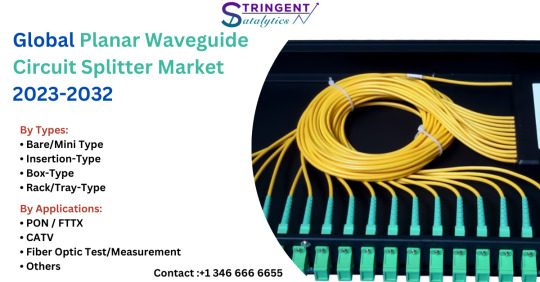
0 notes
Text
Top PLC Splitter Manufacturers in India: NexTik Leads Innovation in Fiber Connectivity
PLC splitter | PLC splitter manufacturers | PLC splitter manufacturers in Noida / India
In the ever-changing world of fiber optic communication, the demand for dependable and high-performance network components is continually increasing. The PLC splitter, a passive optical device that splits a single optical signal into many outputs, is an important part of any fiber optic network. As the backbone of fiber-to-the-home (FTTH), local area networks, and data centers, selecting a reliable supplier is critical. Among the top PLC splitter manufacturers in India , known for its creativity, quality, and dependability.

What is a PLC Splitter?
A PLC splitter (Planar Lightwave Circuit Splitter) is a device that distributes optical signals evenly from a single input to numerous outputs. It is frequently utilized in PON (Passive Optical Network) systems, allowing for efficient data transfer over several endpoints without loss of signal quality. NexTik provides a complete line of PLC splitter solutions that meet a variety of bandwidth and performance requirements.
These devices are small, sturdy, and extremely precise in maintaining signal integrity, even when splitting signals into two, four, eight, sixteen, or more outputs. NexTik offers industry-grade solutions to enterprises looking to grow their fiber networks, ensuring efficiency and cost-effectiveness.
NexTik: Trusted PLC Splitter Manufacturers in Noida
NexTik, headquartered in a major technological cluster, is a leading PLC splitter manufacturer in Noida, providing high-performance optical components to clients across India. Our strategic position allows us to maintain an effective supply chain and rapid delivery times, particularly in metropolitan and industrial locations.
Unlike generic vendors, NexTik prioritizes exceptional design, local manufacturing skills, and stringent quality control. Our Noida-based manufacturing business employs cutting-edge technology to make PLC splitters that match international telecom requirements.
NexTik, one of the leading PLC splitter manufacturers in Noida, provides bespoke splitter solutions to network integrators, ISPs, telecom operators, and data centers. Each product goes through rigorous quality inspections to ensure great performance in a variety of installation settings.
Why NexTik is Among the Best PLC Splitter Manufacturers in India
NexTik, a reputable PLC splitter manufacturer in India, combines knowledge, innovation, and scalability. Our solutions are intended to fulfill the increasing need for fiber optic networks in both urban and rural settings.
Here's why clients from many industries chose NexTik as their preferred PLC splitter supplier:
1. Extensive Product Range
We manufacture a wide range of PLC splitters, including 1x2, 1x4, 1x8, 1x16, 1x32, and 1x64 configurations, in ABS box, LGX box, bare fiber, and rack-mounted formats. Each PLC splitter is designed to provide reliable and consistent signal output.
2. Made in India with Global Standards
NexTik, one of India's fastest-growing PLC splitter manufacturers, promotes the "Make in India" movement by manufacturing components domestically. This assures competitive pricing, improved inventory management, and quicker project implementation times.
3. High-Quality Materials
We employ international waveguide chips and high-quality fiber to ensure low insertion loss and optimum endurance. NexTik is one of the most dependable PLC splitter manufacturers in the country, since all of its products adhere to industry standards.
4. Tailored for Diverse Applications
Whether you're working on FTTH, CATV, or passive optical LAN projects, our PLC splitter solutions are designed to satisfy particular network requirements. In addition, our technical staff provides customization and integration help.
A Rising Demand for PLC Splitters in India
With the government's digital infrastructure push and broad use of high-speed internet, demand for PLC splitter manufacturers in India is quickly increasing. Cities such as Delhi, Mumbai, Bangalore, and, in particular, Noida are rapidly becoming optical communication centers, necessitating strong solutions from manufacturers such as NexTik.
NexTik's central location has made it one of the most popular PLC splitter manufacturers in Noida, providing speedy delivery and after-sales assistance throughout the area. Our team works with system integrators and network designers to guarantee the best splitter placement and performance.
Benefits of Choosing NexTik PLC Splitters
Low insertion loss and high uniformity
Compact design for easy installation
Excellent environmental and mechanical stability
Broad temperature and humidity tolerance
Compliant with Telcordia GR-1209 and GR-1221 standards
Final Thoughts
Choosing the proper PLC splitter manufacturers may significantly improve the overall performance of your fiber optic network. NexTik, a prominent PLC splitter manufacturer in Noida and a known brand among PLC splitter manufacturers in India, provides dependable products that are geared to future-ready network solutions.
NexTik's high-quality PLC splitter series offers flawless signal dispersion and long-term durability, whether you're extending your telecom infrastructure, installing a broadband network, or renovating a data center.Contact us
#plc splitter supplier in india#PLC splitter manufacturer in NOida#PLC Splitter manufacturer in India
0 notes
Text
Understanding Fiber Optic Splitters: PLC, Mini, ABS Box, LGX, and Rackmount Splitters

Fiber optic splitters are essential components in optical networks, enabling the distribution of light signals from a single input to multiple outputs. Among the various types available, PLC, mini, ABS box, LGX, and rackmount splitters each offer unique features suited to different applications. Here's a closer look at these splitters and their benefits.
PLC Splitters: Planar Lightwave Circuit (PLC) splitters are advanced devices that split optical signals with high precision. Using silica waveguide technology, PLC splitters can evenly distribute signals across multiple outputs with minimal signal loss. They are ideal for passive optical networks (PON) and fiber to the home (FTTH) applications, where reliability and performance are critical.
Mini Splitters: Mini splitters offer the same performance as standard PLC splitters but in a more compact form factor. Their smaller size makes them perfect for environments with limited space, such as small data centers or fiber to the curb (FTTC) deployments. Despite their reduced size, mini splitters deliver reliable signal distribution and are easy to integrate into existing networks.
ABS Box Splitters: ABS box splitters are housed in durable ABS plastic enclosures, providing added protection against environmental factors. These splitters are suitable for both indoor and outdoor applications, ensuring long-lasting performance in harsh conditions. Their robust design makes them ideal for telecommunications networks that require reliable, protected signal distribution.
LGX Splitters: LGX splitters are housed in LGX-compliant cassettes, making them easy to install and manage in high-density environments like data centers. Their modular design allows for quick integration and scalability, facilitating efficient cable management and reducing installation time. LGX splitters are commonly used in central offices and enterprise networks.
Rackmount Splitters: Rackmount splitters are designed for installation in standard 19-inch racks, providing an organized and space-efficient solution for managing multiple optical splits. These splitters are perfect for large-scale network deployments, such as in data centers and telecommunication hubs, where space and accessibility are crucial.
Conclusion: Fiber optic splitters, including PLC, mini, ABS box, LGX, and rackmount types, play a vital role in modern optical networks by enabling efficient signal distribution. Each type of splitter offers specific advantages tailored to different applications, from space-saving designs to robust protection and easy scalability. By selecting the right splitter for your network's needs, you can ensure optimal performance, reliability, and future-proofing in your optical infrastructure.
0 notes
Text
The PLC Splitters are a Major Part of Fiber Optics
Fiber optic networks employ PLC splitters, also known as planar lightwave circuit splitters, which are passive optical devices. Its main job is to split or combine optical signals with little signal quality loss. Many optical communication systems, including as Fiber-to-the-Home (FTTH), Passive Optical Networks (PONs), and data center applications, depend on a PLC splitter.
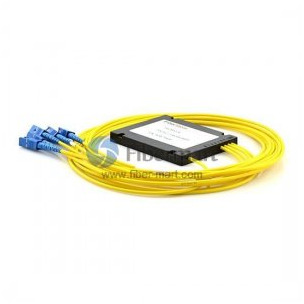
Operation of a PLC Splitter
The workings of a PLC splitter are based on how light travels through waveguides carved or deposited onto a silicon substrate. These waveguides are often arranged in a Y-shape or tree-like arrangement, which enables the technology to effectively divide or combine optical signals.
PLC splitters provide a significant performance and reliability advantage over more conventional competitors like fused biconical taper (FBT) splitters. Low insertion loss, good uniformity, and a large working bandwidth are all characteristics of PLC splitters. They are therefore perfect for long-distance and high-speed data transmission.
Types of PLC Splitters
PLC splitters come in various types, catering to different applications and network configurations:
1x2 PLC Splitter
1x4 PLC Splitter
1x8 PLC Splitter
1x16 and 1x32 PLC Splitters
2x2 PLC Splitter
The advantages of PLC Splitters
The use of PLC splitters has the following major advantages:
Low Loss: Because PLC splitters have a low insertion loss, the bulk of the optical signal is transferred without being degraded.
High Uniformity: PLC splitters provide great signal uniformity, which makes the signal intensity constant at all output ports.
Broad Bandwidth: Because of their wide operating range, these splitters are compatible with a variety of optical transmission types and protocols.
Compact Size: PLC splitters generally take up less room in network cabinets than FBT splitters since they are more compact and smaller in size.
Reliability: PLC splitters are far more dependable and last longer than FBT splitters because of their monolithic architecture.
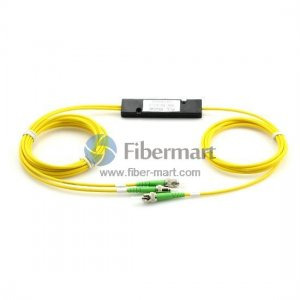
A PLC splitter and a fiber coupler are essential parts of contemporary fiber optic networks because they make it possible to distribute optical information effectively across a variety of applications. A PLC splitter will stay at the forefront of optical network technology, enabling the flawless flow of information in the digital era as the demand for faster and more dependable data transmission increases.
NEXT: What is the Difference Between PLC Splitter and FBT Splitter?
1 note
·
View note
Text
What are the Advantages of Optical Cable Splitter
In general, an optical splitter has many input and output terminals to attain the branch of the light beams and maximize the functionality of optical network circuits. The passive optical splitter can split, or separate, an incident light beam into several light beams at a certain ratio. A fiber optic splitter, better known as a beam splitter, is based on a quartz substrate of an integrated waveguide optical power distribution device. It is similar to a coaxial cable transmission system. The optical network system makes use of an optical signal coupled to the branch distribution. The fiber optic splitter is one of the most significant passive devices in the optical fiber link. It is an optical fiber tandem device with a lot of input and output terminals, especially applicable to a passive optical network to connect the MDF and the terminal equipment and to branch the optical signal.
There are different types of optical cable splitter which can be divided into Fused Biconical Taper (FBT) splitter and Planar Light wave Circuit (PLC) splitters. The FBT splitter is one of the popular ones as FBT splitters are widely accepted and used in passive networks, especially for instances where the split configuration is smaller. The FBT splitter uses two (or more) fibers. The fibers' coating layer is removed. Both fibers, at the same time, are stretched under a heating zone thus forming a double cone. This special waveguide structure allows control of the splitting ratio via controlling length of the fiber torsion angle and stretch.
The fiber optic PLC splitter is a more new technology as it offer a better solution for larger applications. Waveguides are fabricated using lithography onto a silica glass substrate, which allows for routing specific percentages of light. As a result, PLC splitters offer accurate and even splits with minimal loss in an efficient package. The PLC splitter is a micro-optical element using photolithographic techniques to form optical waveguide at medium or semiconductor substrate for realizing branch distribution function.
There are Balanced splitters that consists of 2 input fibers and N output fibers which divide the power of the optical signal proportionally. They are mainly used for non-simultaneous redundancy.
Advantages of optic splitters include:
· The FBT splitter offers low cost, common materials (quartz substrate, stainless steel, fiber, hot dorm, GEL), and an adjustable splitting ratio.
· PLC splitter: Losses are not sensitive to the wavelength, spectral uniformity is higher, it is more compact and is lower cost with greater degrees of splitting.
YDA is the Top three Fiber Optic Passive Components supplier in China, we enjoy offering customers one-stop service in FTTH industry. For more information please visit our website:
https://ydaftth.com/
#Fiber Splitter#Fibre Patch Cables#Fiber Optic Distribution Box#fiber optic patch cord#Fiber Optic Splitter
1 note
·
View note
Text
How Many Types of PLC Splitter Do You Know?
A planar waveguide circuit (PLC) splitter is a type of optical power management device that is fabricated using silica optical waveguide technology to distribute optical signals from the Central Office (CO) to multiple premise locations. It provides low insertion loss, low polarization-dependent loss, small size, wide operating wavelength and temperature range, high reliability, high stability, and good channel uniformity. This article will provide a better understanding of PLC splitter types.
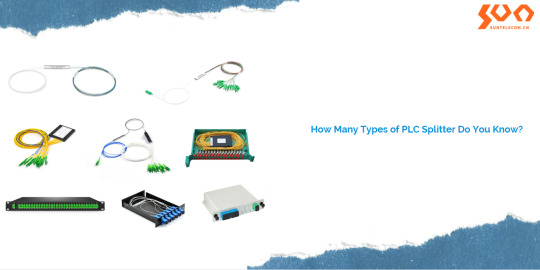
PLC Splitter Types
Bare Fiber PLC Splitter
A bare fiber PLC splitter has no connectors at the bare fiber ends and is suitable for PON networks that can be installed in the pigtail cassette, test instrument, and WDM system, which minimizes space occupation. It is relatively fragile on fiber protection and needs a complete protection design on carrying box body and device.

Blockless Fiber PLC Splitter
The Blockless PLC Splitter has 900um loose tube fiber protection on the input and output fibers and can be provided with a selection of connectors at fiber termination, making it suitable for use directly in distribution boxes or network cabinets.
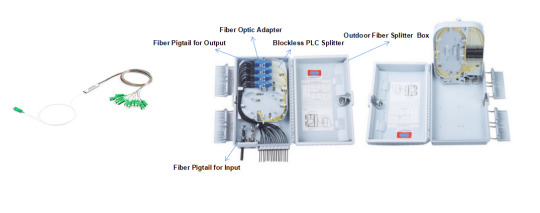
Fanout PLC Splitter
Fanout PLC splitter is mainly used for 0.9mm optical fiber , where the ribbon fiber can be converted to 0.9mm optical fiber through fan-out. Fiber adapters can be provided both for the input and output ends of this type of splitter. It can be used directly to meet the low demand for the size of the splitter.
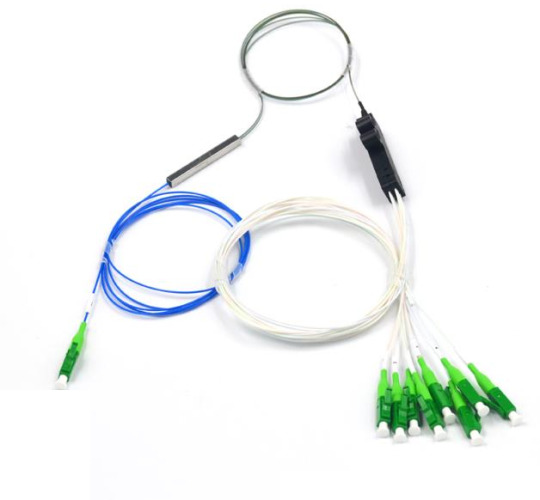
ABS Box PLC Splitter
The ABS box PLC splitter has a plastic ABS case and provides good protection for inner optical components and cables. It is designed for convenient and reliable installation, but its volume is relatively large. ABS box PLC splitter is widely used with outdoor fiber distribution boxes for PON, FTTH, FTTX, and GOPN networks and network cabinets.
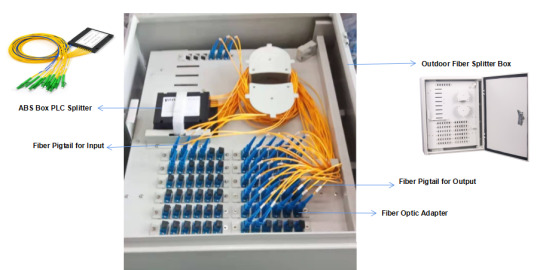
Tray PLC Splitter
Tray PLC splitter uses a space-saving package to better cable management and signal transmission. Tray PLC splitter can accommodate a variety of PLC Splitter with various types of connectors: SC/PC, SC/APC, FC/PC, FC/APC, ST/PC, ST/APC, LC/PC, LC/APC, etc. It is widely used in ODF and Outdoor Cross-connect cabinets in telecommunication, CATV, FTTX, FTTH, etc.
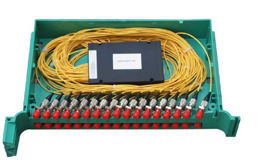
Rack- Mount PLC Splitter
Rack-mount PLC Splitter is packaged in a 19-inch rack-mount panel. It provides excellent optical performance and convenient network installation and is widely used in FTTH, PON, EPON, GPON, CATV, and data centers.
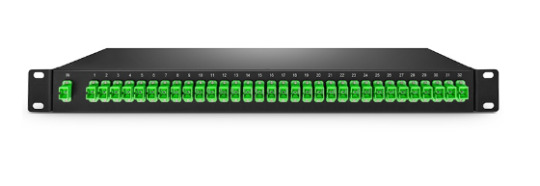
LGX Box PLC Splitter
LGX Box PLC splitter has a strong metal box to house the PLC splitters. It can be used alone or easily installed in a standard fiber optic patch panel or fiber optic enclosure. The standard LGX metal box enclosure provides a plug-and-play method for integration into the network, which eliminates any risk during installation. LGX box PLC splitter is commonly used in POL, Data centers, LAN, CATV, LCP, and FTTx.
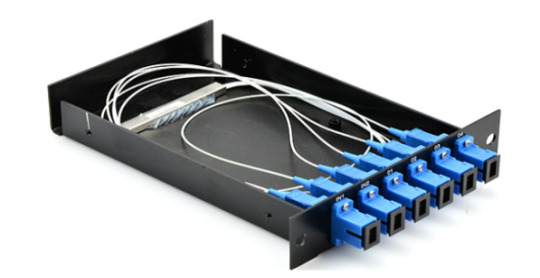
Mini plug-in Insert Type PLC Splitter
A mini plug-in insert type PLC splitter is designed for plug-and-play splitter applications and provides reliable protection for the fiber optic splitter. It is usually installed in the wall-mount FTTH box for fiber optic signal distribution.

Conclusion
These types of PLC splitters are usually installed to serve PON and FTTH networks. 1xN and 2xN are the common splitter ratios for specific applications. You should choose the most suitable one according to your project. Sun Telecom specializes in providing one-stop total fiber optic solutions for all fiber optic application industries worldwide. Contact us if any needs.
1 note
·
View note
Text
0 notes
Text
Here’s All That You Need to Know About PLC Splitter
The fiber optic link is becoming more acceptable by consumers these days. We can see the Passive Optical Network Systems deployed in many homes and the fiber optic cable has become an inevitable parts of the PON systems. The optical splitters are classified into FBT – Fused Biconical Taper splitter and PLC- Planar Light wave Circuit splitter.
The fiber optic PLC splitter is relatively a new splitter than the FBT. You can commonly source the splitter from any manufacturer even online. There are many suppliers for fiber optic splitter that deal in fiber optic adapter as well. You can choose a supplier based on the price and quality they offer.
Before moving ahead, let’s first understand what is a PLC splitter?
The PLC splitter is used for dividing one or two light beams into multiple light beams uniformly or combining multiple light beams into one or two beams. It is a passive device which comes with several input and output terminals. The fiber optic PLC splitter offers a low cost light distribution solution along with reliability and stability. The PLC splitters can offer splitting ratio up to 1 X 64 which is quite higher than the FBT splitter.
Manufacturing Technology
The fiber optic PLC splitter is based on semiconductor technology. They are manufactured by planar waveguide circuit technology and the design consists of one optical PLC chip and several optical arrays based on the output ratio. The arrays are coupled on both ends of the PLC splitter chip.
How does the PLC splitter work?
The splitter is commonly installed between the PON and the optical network terminals which OLT serves. The number of the outputs in the PLC module determines the number of splits. The splitter can be used in either centralised PON architecture or distributed architecture. While in the former, 1X32 PLC splitter is used, in the latter, 1 x4 PLC splitter is connected to an OLT port in the central office. The each of the four fibers are routed to the outside plant terminal which consists of 1 x8/ 1 x 4 PLC splitter.
Explore the web for more information and suggestions on finding the right supplier brand for fiber optic adapter. Fiber Optic Patch Cord Manufacturers
1 note
·
View note
Text
arkoptics.com
A passive multiplexer in most networks consists of a mux and demux optical component. The mux combines, or multiplexes, wavelengths onto a fiber. The demux on the other end of the connection splits, or de-multiplexes, the connections.
In DWDM system, DWDM mux demux is two indispensable modules. Mux (Multiplexer) is a module at the transmitter end that brings several data signals together for transporting over a single fiber, while Demux (Demultiplexer) is a module at the receiver end that separates the signals that come together and passes each channel to an optical receiver.
CWDM mux demux (Coarse Wavelength Division Multiplexer/Demultiplexer) is a flexible, low-cost solution that enables the expansion of existing fiber capacity. CWDM multiplexer is for combining signals together, while demultiplexer is for splitting signals apart.
A polarization-maintaining (PM) WDM filter is a small device used to multiplex PM signals while maintaining the output polarization. When you are using highly efficient systems, PM fibers and PM signals play a very critical role in ensuring the desired efficiency.
Fiber Patch Cord & Cable Assembly, often called fiber patch cable, fiber jumper, or fiber patch lead, is a length of fiber cable that terminated with fiber optic connectors (LC, SC, MTRJ, ST and etc.) at each end. The connectors allow fiber optic patch cord to be rapidly connected to an optical switch or other telecommunications/computer device.
Fiber loopback is widely used for various applications. In terms of telecommunication, loopback is a hardware or software method to feed a received signal or data back to the sender. It is very useful for solving physical connection problems.
Fiber terminators(Plug-in type or Build-out type) are used to terminate unused fiber connector ports in fiber optic systems so optical terminators unwanted reflections are not introduced back into the system. It is used in the fiber-optic networks to install on possibly unused ports.
Fiber optic isolator is a passive component used for fiber optic communications. As a magneto-optic device, the purpose of optical isolator is to allow light to be transmitted in only one direction. An optical isolator is a device that is designed to allow the optical signal travel in the forward direction while block reflections that would travel in the backward direction. Optical isolators are critically important in many applications in optical systems.
FBT splitter(fused biconical taper) is the traditional technology in which two fibers are placed closely together, typically twisted around each other and fused together by applying heat while the assembly is being elongated and tapered. A signal source controls the desired coupling ratio. The fused fibers are protected by a glass substrate and then protected by a stainless steel tube, typically 3 mm diameter by 54 mm long. FBT splitters are widely accepted and used in passive optical networks.
The PLC splitters are used to separate or combine optical signals. A PLC (planar lightwave circuit) is a micro-optical component based on planar lightwave circuit technology and provides a low-cost light distribution solution with small form factor and high reliability. PLCs are manufactured using silica glass waveguide circuits that are aligned with a v-groove fiber array chip that uses ribbon fiber. Once everything is aligned and bonded, it is then packaged inside a miniature housing. PLC splitters have high quality performance, such as low insertion loss, low PDL, high return loss, etc.
1 note
·
View note
Text
Global Silicon Photonics Research Report 2021 - Industry Size, Share, Demands, Regional Analysis & Estimations Till 2027
The Global Silicon Photonics Market Report, in its latest update, highlights the significant impacts and the recent strategical changes under the present socio-economic scenario. The Silicon Photonics industry growth avenues are deeply supported by exhaustive research by the top analysts of the industry. The report starts with the executive summary, followed by a value chain and marketing channels study. The report then estimates the CAGR and market revenue of the global and regional segments.
Base Year: 2020
Estimated Year: 2021
Forecast Till: 2027
The report classifies the market into different segments based on type and product. These segments are studied in detail, incorporating the market estimates and forecasts at regional and country levels. The segment analysis is helpful in understanding the growth areas and potential opportunities of the market.

Get | Download FREE Sample Report of Global Silicon Photonics Market @ https://www.decisiondatabases.com/contact/download-sample-8852
A special section is dedicated to the analysis of the impact of the COVID-19 pandemic on the growth of the Silicon Photonics market. The impact is closely studied in terms of production, import, export, and supply.
The report covers the complete competitive landscape of the Worldwide Silicon Photonics market with company profiles of key players such as:
Aurrion Inc.
Cisco Systems, Inc.
Das Photonics
Finisar Corporation
Hamamatsu Photonics K.K.
Infinera Corporation
Intel Corporation
International Business Machines Corporation
Luxtera Inc.
Mellanox Technologies, Ltd.
Stmicroelectronics N.V.
Want to add more Company Profiles to the Report? Write your Customized Requirements to us @ https://www.decisiondatabases.com/contact/get-custom-research-8852
Silicon Photonics Market Analysis by Component:
Passive Components
Optical Waveguides
Planar Waveguides
Strip Waveguides
Rib Waveguides
Fiber Waveguides
Splitters
Isolators
Active Components
Optical Modulators
Absorptive Modulators
Franz-Keldysh Effect
Quantum-Confined Stark Effect
Plasma Dispersion Effect
Refractive Modulators
Electro-Optic Effect
Magneto-Optic Effect
Thermo-Optic Effect
Polarization Change in Liquid Crystals
Photo Detectors
Wavelength-Division Multiplexing (WDM) Filters
Switches
Lasers
Single Frequency Laser
Tunable Laser
Silicon Photonics Market Analysis by Product:
Transceivers
Active Optical Cables
Optical Multiplexers
Variable Optical Attenuators
Optical Engines
RF Circuits
Other
Silicon Photonics Market Analysis by Applications:
Consumer Electronics
Telecommunication
Data Communication
Medical and Life Science
Spectroscopy
Defense
Commercial
Holography and Digital Signage
Image Processing
Silicon Photonics Market Analysis by Geography:
North America (USA, Canada, and Mexico)
Europe (Germany, UK, France, Italy, Russia, Spain, Rest of Europe)
Asia Pacific (China, India, Japan, South Korea, Australia, South-East Asia, Rest of Asia-Pacific)
Latin America (Brazil, Argentina, Peru, Chile, Rest of Latin America)
The Middle East and Africa (Saudi Arabia, UAE, Israel, South Africa, Rest of the Middle East and Africa)
Key questions answered in the report:
What is the expected growth of the Silicon Photonics market between 2022 to 2027?
Which application and type segment holds the maximum share in the Global Silicon Photonics market?
Which regional Silicon Photonics market shows the highest growth CAGR between 2022 to 2027?
What are the opportunities and challenges currently faced by the Silicon Photonics market?
Who are the leading market players and what are their Strengths, Weakness, Opportunities, and Threats (SWOT)?
What business strategies are the competitors considering to stay in the Silicon Photonics market?
Purchase the Complete Global Silicon Photonics Market Research Report @ https://www.decisiondatabases.com/contact/buy-now-8852
About Us:
DecisionDatabases.com is a global business research report provider, enriching decision-makers, and strategists with qualitative statistics. DecisionDatabases.com is proficient in providing syndicated research reports, customized research reports, company profiles, and industry databases across multiple domains. Our expert research analysts have been trained to map client’s research requirements to the correct research resource leading to a distinctive edge over its competitors. We provide intellectual, precise, and meaningful data at a lightning speed.
For more details: DecisionDatabases.com E-Mail: [email protected] Phone: +91 90 28 057900 Web: https://www.decisiondatabases.com/
0 notes
Video
youtube
Information about PLC Splitter | Unisol
Fiber optic plc splitter (Planar light wave circuit splitter) is a type of optical power management device that is fabricated using silica optical Waveguide technology. They are designed for FTTx Passive Optical Networks, CWDM, DWDM and optical cable TV System.
0 notes
Text
#Global Planar Waveguide Circuit Splitter Market Size#Share#Trends#Growth#Industry Analysis#Key Players#Revenue#Future Development & Forecast
0 notes
Text
Global and Regional PLC Fiber Optical Splitters Industry Status and Prospects Professional Market Research Report Standard Version 2021-2027
The global PLC Fiber Optical Splitters market was valued at 220.28 Million USD in 2020 and will grow with a CAGR of 1.23% from 2020 to 2027, based on our Researcher newly published report.
The prime objective of this report is to provide the insights on the post COVID-19 impact which will help market players in this field evaluate their business approaches. Also, this report covers market segmentation by major market verdors, types, applications/end users and geography(North America, East Asia, Europe, South Asia, Southeast Asia, Middle East, Africa, Oceania, South America).
PLC (Planar Lightwave Circuit) Splitter is integrated waveguide optical power budget device based on quartz substrate, featuring small size, wide operating wavelength range, high reliability, and good light splitting uniformity, which is especially suitable for split circuit connecting head and terminal equipment and realizing photosignal transmission in passive optical network (EPON?BPON?GPON and so on).Global PLC Fiber Optical Splitters key players include Henan Shijia Photons Tech, Hengtong Optic-Electric, Tianyisc, FiberHome, Tongding Group, etc. Global top five manufacturers hold a share about 35%. China is the largest market, with a share over 40%, followed by North America, and Europe, both have a share about 40%. In terms of product, Bare/Mini Type is the largest segment, with a share over 25%. And in terms of application, the largest application is PON / FTTX, followed by CATV, Fiber Optic Test/Measurement, etc.
Download FREE Sample of this Report @ https://www.grandresearchstore.com/report-sample/global-regional-plc-fiber-optical-splitters-2021-2027-235
By Market Verdors:
Tianyisc
Browave
Broadex Technologies
NTT Electronics Corporation (NEL)
Henan Shijia Photons Tech
Wuxi AOF
Wooriro
PPI
FOCI Fiber Optic Communications
FiberHome
Hengtong Optic-Electric
Honghui
Sindi Technologies
Senko
Tongding Group
Yilut
Korea Optron Corp
Ilsintech
Kitanihon Electric
T&S Communication
By Types:
Bare/Mini Type
Insertion-Type
Box-Type
Rack/Tray-Type
By Applications:
PON / FTTX
CATV
Fiber Optic Test/Measurement
Key Indicators Analysed
Market Players & Competitor Analysis: The report covers the key players of the industry including Company Profile, Product Specifications, Production Capacity/Sales, Revenue, Price and Gross Margin 2016-2027 & Sales with a thorough analysis of the market?s competitive landscape and detailed information on vendors and comprehensive details of factors that will challenge the growth of major market vendors.
Global and Regional Market Analysis: The report includes Global & Regional market status and outlook 2016-2027. Further the report provides break down details about each region & countries covered in the report. Identifying its sales, sales volume & revenue forecast. With detailed analysis by types and applications.
Market Trends: Market key trends which include Increased Competition and Continuous Innovations.
Opportunities and Drivers: Identifying the Growing Demands and New Technology
Porters Five Force Analysis: The report provides with the state of competition in industry depending on five basic forces: threat of new entrants, bargaining power of suppliers, bargaining power of buyers, threat of substitute products or services, and existing industry rivalry.
Key Reasons to Purchase
To gain insightful analyses of the market and have comprehensive understanding of the global market and its commercial landscape.
Assess the production processes, major issues, and solutions to mitigate the development risk.
To understand the most affecting driving and restraining forces in the market and its impact in the global market.
Learn about the market strategies that are being adopted by leading respective organizations.
To understand the future outlook and prospects for the market.
Besides the standard structure reports, we also provide custom research according to specific requirements.
Get the Complete Report & TOC @ https://www.grandresearchstore.com/ict-and-media/global-regional-plc-fiber-optical-splitters-2021-2027-235
Table of content
Chapter 1 Industry Overview 1.1 Definition 1.2 Assumptions 1.3 Research Scope 1.4 Market Analysis by Regions 1.4.1 North America Market States and Outlook (2022-2027) 1.4.2 East Asia Market States and Outlook (2022-2027) 1.4.3 Europe Market States and Outlook (2022-2027) 1.4.4 South Asia Market States and Outlook (2022-2027) 1.4.5 Southeast Asia Market States and Outlook (2022-2027) 1.4.6 Middle East Market States and Outlook (2022-2027) 1.4.7 Africa Market States and Outlook (2022-2027) 1.4.8 Oceania Market States and Outlook (2022-2027) 1.4.9 South America Market States and Outlook (2022-2027) 1.5 Global PLC Fiber Optical Splitters Market Size Analysis from 2022 to 2027 1.5.1 Global PLC Fiber Optical Splitters Market Size Analysis from 2022 to 2027 by Consumption Volume 1.5.2 Global PLC Fiber Optical Splitters Market Size Analysis from 2022 to 2027 by Value 1.5.3 Global PLC Fiber Optical Splitters Price Trends Analysis from 2022 to 2027 1.6 COVID-19 Outbreak: PLC Fiber Optical Splitters Industry Impact Chapter 2 Global PLC Fiber Optical Splitters Competition by Types, Applications, and Top Regions and Countries 2.1 Global PLC Fiber Optical Splitters (Volume and Value) by Type 2.1.1 Global PLC Fiber Optical Splitters Consumption and Market Share by Type (2016-2021) 2.1.2 Global PLC Fiber Optical Splitters Revenue and Market Share by Type (2016-2021) 2.2 Global PLC Fiber Optical Splitt
CONTACT US: 276 5th Avenue, New York , NY 10001,United States International: (+1) 646 781 7170 / +91 8087042414 Email: [email protected] Follow Us On linkedin :- https://www.linkedin.com/company/grand-research-store/
0 notes
Photo


1x4 Fiber Optic PLC Splitter with Mini Tube Type
The PLC Splitters is branching devices that is used to distribute optical signals to multiple locations for processing. In optical networks, it is often necessary to split an optical signal into many identical signals, or to combine many signals into a single signal. PLC Splitter (Planar lightwave circuit splitter) is a type of optical power management device that is fabricated using silica optical waveguide technology. They are designed for FTTx Passive Optical Networks, CWDM, DWDM and optical cable TV System. PLC Splitter is responsible to distribute the signal from CO to numbers of premises. Holight provides whole series of 1*N and 2*N splitter products that are tailored for specific applications. All prodcts meet GR-1209-CORE-2001 and GR 1221-CORE-1999 requirements.
If you want to know more details, please don't hesitate to contact me.
#fiber optic#plc splitter#mini tube#connector#fiber optic splitter#1x4 plc splitter#optical splitter
0 notes
Text
Know about the Working of PLC splitter
Working of fiber optic splitter
Whenever in a network there is the transmission of the light beam it needs to be divided into two or more light beams and for this purpose, a fiber splitter is used.
Whenever there is the transmission of the light signal, the light energy cannot entirely concentrate in the fiber core. Through the cladding of the fiber, a small amount of energy will be spread. The transmitting light in an optical fiber can enter into another optical fiber if two fibers are close enough to each other. Therefore, you can achieve the reallocation technique of optical signals in multiple fibers.
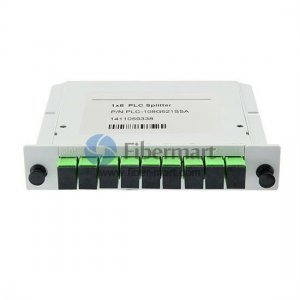
Splitter never generates power nor do they need it. Hence, it is a passive device. Splitters do not even contain any electronic components. It is a simple device. A fiber optic splitter is also referred to as a beam splitter.
In most fiber optic networks splitters are widely used. It consists of numerous input and output terminals, which are majorly applicable to a passive optical network like GPON, BPON, FTTX, EPON, FTTH, etc.
Into two types there is a division of the fiber optic splitters: Fused Biconical Taper (FBT) splitter and PLC splitter.
The most commonly used splitters are the FBT splitters. FBT splitters are accepted everywhere and are mainly used in passive networks.

PLC Splitter
PLC refers to a planar lightwave circuit. PLC splitter makes use of an optical chip as a micro-optical device so that the input signal can be split into various outputs. At the edge of the chip, there is the presence of a light circuit in ribbon form that is mounted on a carrier and fibers. PLC splitter divides the incident light beam (input light signal) into two or more light beams (output light signal) with the use of a fiber splitter chip. As the material of the lightwave circuit PLC splitter adopts silica glass. In PLC splitter the substrate, waveguide, and lid are three basic layers. PLC splitters can be further categorized into different types for various applications which include LGX box PLC splitters, block less PLC splitters, ABS PLC splitters, tray-type PLC splitters bare PLC splitters, mini plug-in type PLC splitters, and 1U rackmount PLC splitters.
youtube
1 note
·
View note
Text
How Much Do You Know About PLC Splitter?
How Much Do You Know About PLC Splitter?
What Is PLC Splitter? PLC splitter, also called Planar Waveguide Circuit splitter, is a device used to divide one or two light beams to multiple light beams uniformly or combine multiple light beams to one or two light beams. It is a passive optical device with many input and output terminals, especially applicable to PON (EPON, GPON, BPON, FTTX, etc.) to connect the MDF (main distribution…
View On WordPress
0 notes